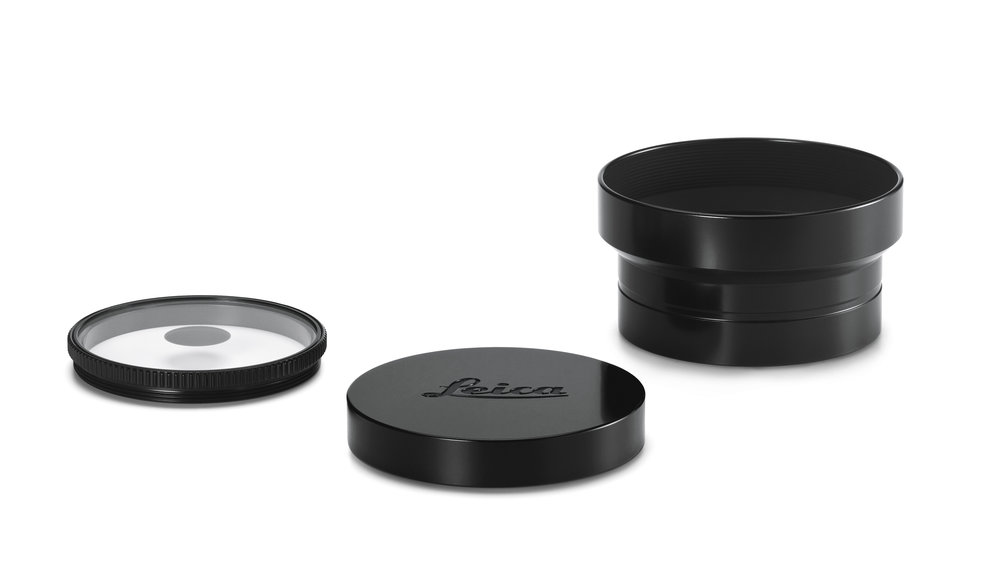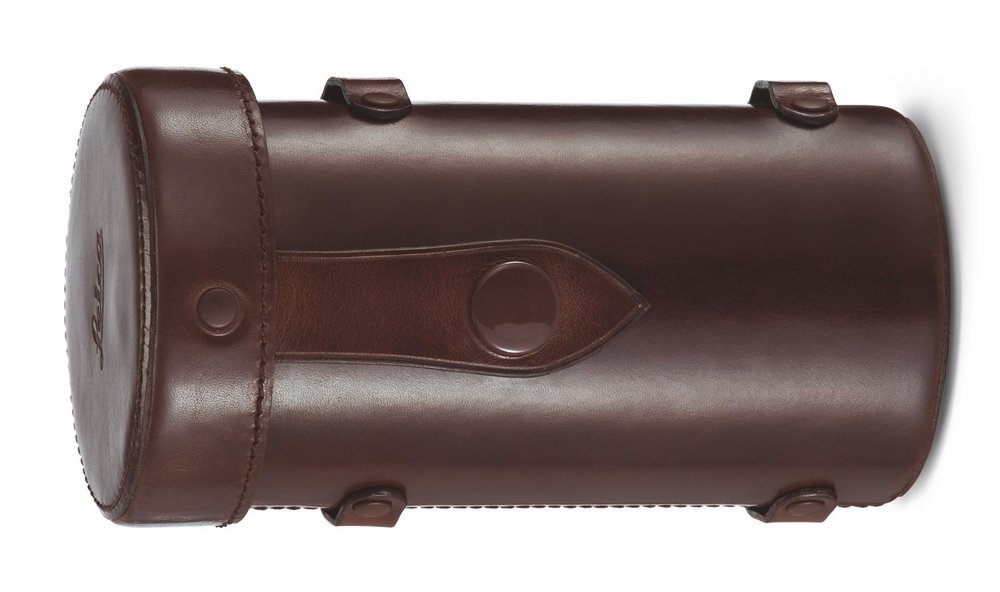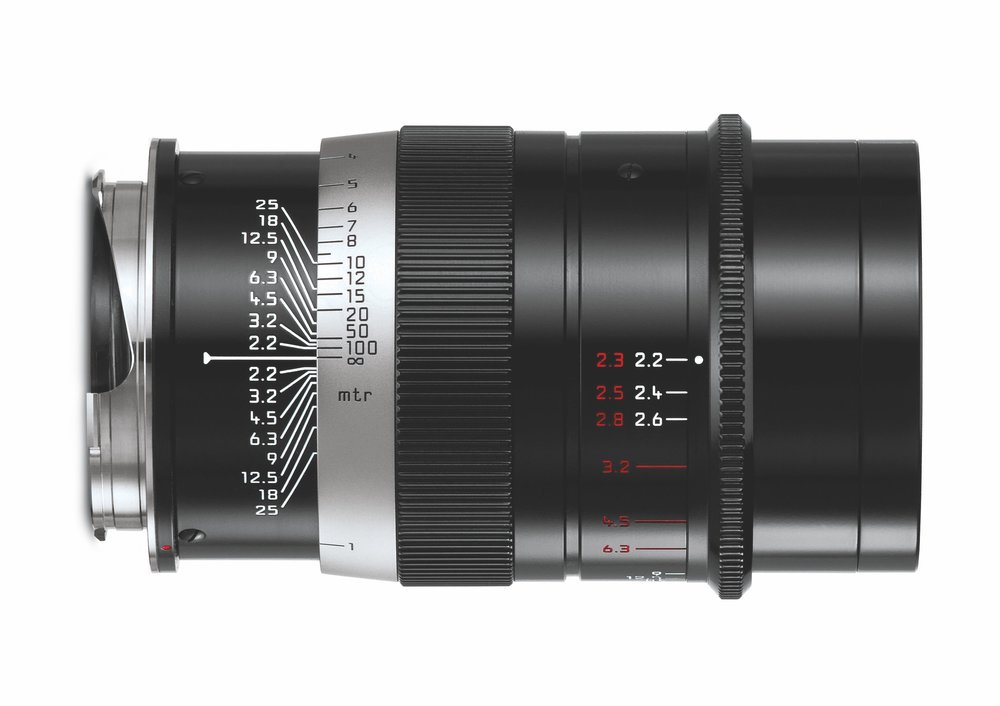
Με θάμπωσε με την ομορφιά της……
The Leica Thambar is the only lens that comes with its own Greek aphorism: Me thambose me tin omorfia tis — to dazzle by its beauty. At first glance at the name you would be forgiven for imagining the Thambar to be a percussion instrument of modest proportions. But you’d be wrong. The name derives from the Greek thambos (θαμπός), to dazzle or to blur. That bit of information must be worth a pint at the local camera club quiz night.


The long-rumoured reincarnation of the 90mm f/2.2 Thambar, the Blurry One, will be available to retro-lens collectors for £5,085 when it hits the showrooms next month. The Thambar, a revival of the lens first introduced in 1935, is the second retro offering from Leica. The first was the tiny Summaron-M 28mm f/5.6.

The Thambar was made in very limited qualities up to the start of the war — just 3,000 examples — so the new lens will give many photographers their first chance to create a pre-war movie poster. It was originally designed as a portrait lens to recreate the ultra-soft (shall we say blurry?) images beloved of Hollywood star photographers such as George Hurrell, Clarence Bull and Max Munn Autrey. The resurrected version makes a virtue of its ability to blur the image in an age when popular prejudice runs to clinical sharpness.

According to Leica, when the original Thambar hit the streets in 1935 it was an attempt to appeal to exponents of the latest portraiture fashion of the day — the blurry image. Your run-of-the-mill Leica lens of the Thirties was considered too sharp by half, so today’s offerings would have been well beyond the Pale.
The lens “gave rise to images whose romantic aesthetics are not only unmatched by any other lens to the day, but also impossible to replicate in digital post-processing.” Quite. That’s what I thought.
Photographers of the day found that the Thambar could be temperamental and results were not always as expected. There was an element of trial and error associated with focusing the Blurry One. An experienced user recommended taking several shots in the hope that one would have the required characteristics. Many, too, found that the Thambar relished contra-jour situations. New owners might start by placing their favourite Hollywood starlet downwind of a bright light source. Since the modern Thambar is said to have the same optical characteristics as the original, forewarned is forearmed.

As a counterpoint to today’s clinical M lenses, including the blisteringly sharp 50mm Apo Summicron-M and the 90mm Apo, the Thambar should be great fun. It’s a portrait lens through and through, and blurry with it. As a means of recreating that dreamy 1930s image and, along the way, banishing wrinkles and blemishes, the Thambar should definitely be on your list.

The Thambar will be available from next month from Leica dealers, including Red Dot Cameras in London, and orders can be placed now. I’m looking forward giving it blur when I can borrow one.
___________
- Subscribe to Macfilos for free updates on articles as they are published
- Want to make a comment on this article but having problems?
Full press information
Free for release after: 17 October 2017, 3 p.m. (CET)
Uniquely aesthetic photography:
Leica Camera AG presents a modern renaissance of the classic lens – the Leica Thambar-M 1:2,2/90
Wetzlar, 17 October 2017. A legend reborn: following the Leica Summaron-M 1:5,6/28, Leica Camera AG has further expanded its lens portfolio with the Thambar-M 1:2,2/90, the modern renaissance of another classic lens. Just like its namesake from 1935, the contemporary incarnation of the lens is distinguished by its characteristic soft-focus effect and unmistakeable bokeh. Its focal length of 90 mm is suitable for photography in a multitude of scenarios and is as good as predestined for capturing portraits with a uniquely aesthetic atmosphere that cannot be reproduced in digital postprocessing. The new Thambar-M is thus an exciting addition to the existing Leica M lens portfolio and brings photographers entirely new possibilities for creative composition.
The optical design of its ancestor remains almost unchanged in the new Thambar- M 1:2,2/90. It has therefore also inherited the characteristic properties of its predecessor. The only difference is that the four elements in three groups that make up the design have now been single-coated to protect the glass against environmental influences and surface corrosion. The 20 blades of its iris deliver a unique bokeh with perfectly round rendition of point light sources.
The soft look of the Thambar is the result of intentionally accepted under-correction of spherical aberration. This under-correction increases towards the edges of the optical system with the consequence that not only the depth of focus, but also the degree of softening can be precisely controlled by means of the stepless aperture
setting. The effect is more pronounced as apertures increase, and is continually reduced as the lens is stopped down to smaller apertures.
The design of the original lens has been almost completely preserved in todayʼs Thambar-M 1:2,2/90. The black paint finish, the proportions of the lens and its aperture engravings in red and white correspond to the appearance of the original. In addition to this, slight modifications have been made that bring the lens into line with the current, minimalist design of modern M-Lenses. These include the knurling, the lettering and scales and the specific use of sharp edges and bevelling that underline the precision of the lens design.
ʻThe name Thambar has always been preceded by the adjective ʻlegendaryʼ – rightly so. It portrays people with a wonderful aura, in a romantic way – but landscapes too are raised to a higher, incomparably aesthetic plane. The addition of a new incarnation of this classic lens to our selection of vintage lenses was one of our greatest wishes – to my great delight, this wish has now been fulfilled.ʼ emphasises Dr. Andreas Kaufmann, majority shareholder and chairman of the supervisory board of Leica Camera AG.
As is the case with all Leica lenses, the Leica Thambar-M 1:2,2/90 is also manufactured in strict compliance with the most stringent quality criteria. The use of only the best materials in its construction guarantee the familiar long working life of all Leica lenses. As was the case with the original lens, the lens hood, the ring of the centre-spot filter and both front and rear lens caps are made of metal. Even smallest details, like the felt lining of the lens hood and the front cap, contribute to the exceptional perceived quality of this lens. The design of the rigid lens keeper in ʻVintage Brownʼ leather is identical to that of the original from 80 years ago in almost every respect and, as in the past, the centre-spot filter can be safely and conveniently stowed away in its lid.
The Leica Thambar-M 1:2,2/90 will be on sale from mid-November 2017.
 2017-10-18 10-44-03.png)

Peter Loy has just listed an ‘original Thambar’ for £1249 … without filters; optics marked but unlikely to affect image. A bargain for someone.
Fuji must be laughing all the way to the bank at Leica wasting time and efforts on yet more needless retro rubbish, however the saddest thing to me at least as 60 year plus long term Leica system user is to note the continued waste of production line and development time line on such items at the very time when they are not making or seemingly developing anything genuinely new in system terms which might actually enhance or further our ‘Modern Day’ digital photographic needs.
Sad indeed, and especially so given how often Leica nowadays so often re offer whatever all over again later, but in some other rainbow colour. Sorry Leica but I for one will not be interested in buying one of those either, whereas had you brought out a interchangeable version of my beloved X-Vario, or added a inbuilt EVF to my T, etc I would have been first in line to buy.
For now at least I will keep them along with my very considerable Leica M MP240 outfit, but given Leica’s weird and dare I say incomprehensibly modern day come and go product line ups maybe I will not remain a Leica buff for very much longer so please be warned you marketing men at Wetzlar as meanwhile my much easier to use, Fuji X-Pro 2 outfit has been steadily growing.
Only the real-world images will tell…………
Would have been better to bring along the new SL lenses than waste time and resources in this way. What can they be thinking?
Now I know Leica have completely lost their marbles. Don Morley
Nostalgia Sells! Why else are rangefinders and film still around.
I feel that Leica is ‘fiddling while Rome burns’ here. There is a long delivery time for mainstream products, particularly the M10 (in the UK at least), which results in much disgruntlement and gnashing of teeth, so perhaps energy needs to be directed here, rather than in these super-niche products. I wonder how many of these will be sold? If I wanted one, at the price quoted for this Johnny-come -lately, I’d enjoy seeking out an original version.
A good point, John. We can only hope that the lens production line and camera line are not dependent on one another. So avoiding niche lens products might not be translated into a speeding up of M10 production. But then who knows?
Yes, indeed. I had considered that Mike. It is fascinating to see these developments, and I don’t wish to criticise the effort which has undoubtedly gone into this product. But as we know, Leica is in relative terms a tiny company, so in business terms surely their tiny resources need to be channelled where demand, and dare I say, profit lie.
Not really an item for collectors, who will always prefer to own the original version. I am sure that Leica did some research on the potential ‘user market’ at this price, however. An electronic Visoflex along with TTL metering and digital trial and error will make the modern version easier to use than its predecessor in the 1930s. You need plenty of spare batteries for the Visoflex, however, and it rotates a bit too easily under use. I will cover those issues in an upcoming article about my trip to Chicago.
William
It will be interesting to compare this with the marvellous Zeiss C-Sonnar 50/1.5 which appears to render in a similar fashion yet costs a fraction of the price of the Thambar. Leica’s motto appears to be "if the ducks are quacking you might as well feed them". And who can blame them.
I like the rendering of the f/1.5 Sonnar but I wouldn’t say it is ultra soft to the extent that it is comparable with the Thambar — which indeed is an oddity and definitely a taste to be acquired. I’d take the Sonnar, frankly, because I am sure I would get much more use out of it. And, as you say, it is relatively inexpensive…..
To say the Thambar is a difficult lens to master is an incredible understatement. This has been the most difficult lens I have ever worked with. With film cameras, you must be either very good or very lucky to get good results. I’m more inclined to say very lucky as the results are impossible to pre-visualize. Now with the M10 and Visoflex I am hoping to finally get some decent results!
Best of luck to buyers of the new version just announced. Kudos to Leica on this bold move!
I was being charitable, Bill. After reading up on the Thambar I concluded that it isn’t for the faint of heart. I did read one comment which stated that the original Thambar was Leica’s worst-designed lens, which, if only partly true, makes one wonder about this resurrection. Thanks, by the way, for mentioning Macfilos in Chicago — I had a full report from William and I really wishes I had signed up for a visit.